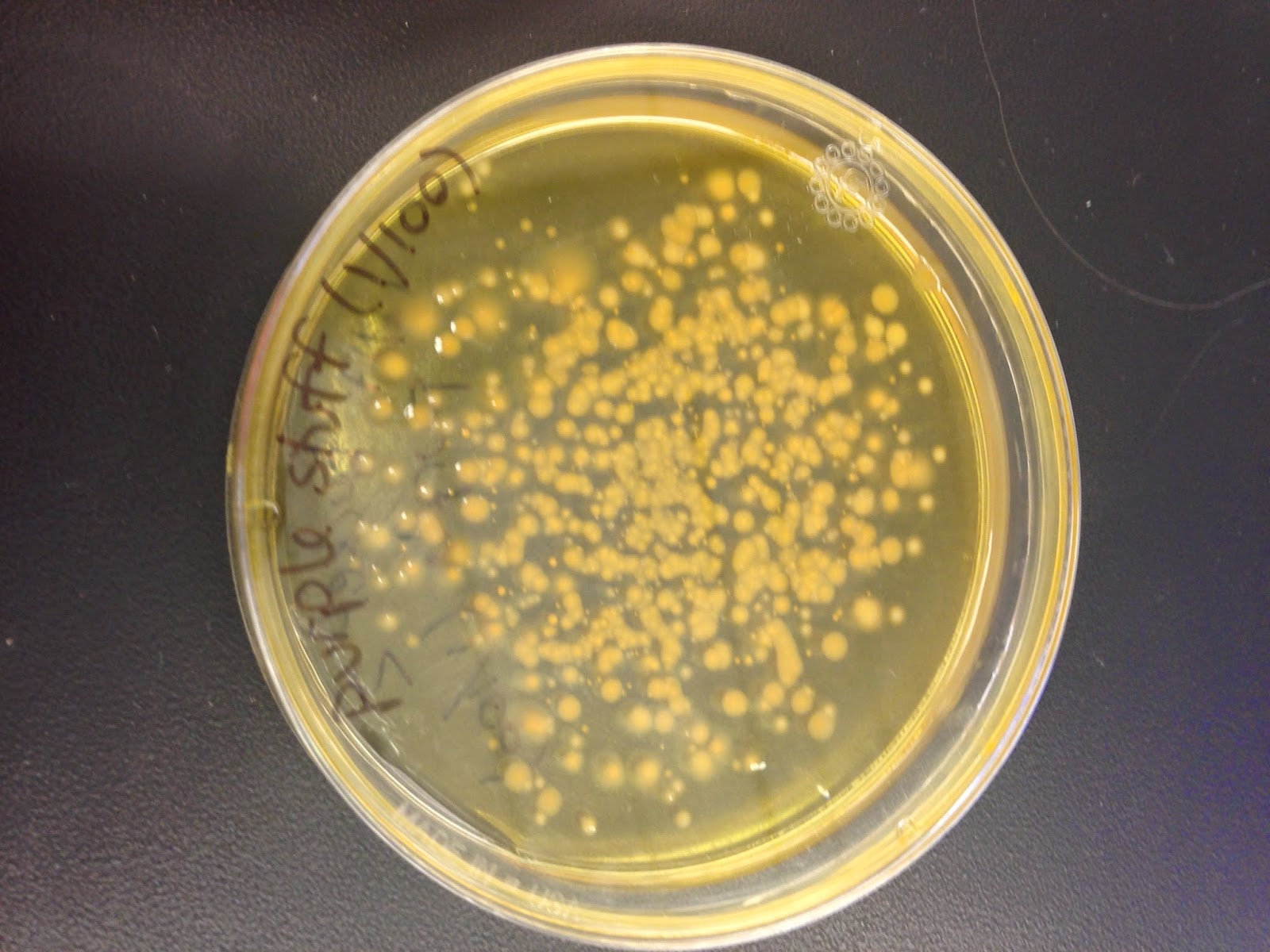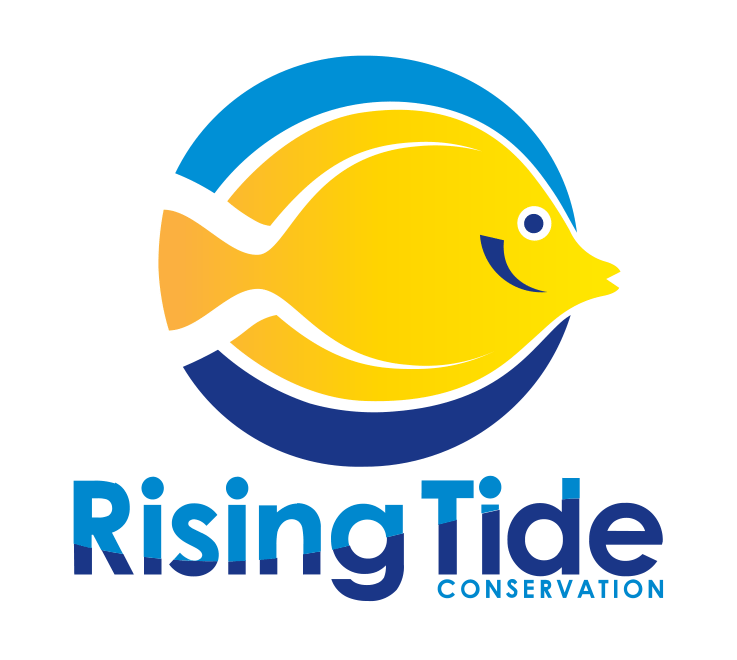Aloha everyone!
It’s been a while since my last post, but it’s been a busy few months. Though it’s the kind of busy you don’t realize until you sit down and catch your breath. It’s been a lot of fun spending my days in the lab working with everyone learning new things.

Figure 1. Culture of bacteria (Pseudomonas sp.??) on marine agar isolated from larval rearing tanks at OI.
Since we are still observing relatively high mortality just past first feeding, my work at the Oceanic Institute is focused on bacterial population analysis and application of probiotics to our yellow tang larval rearing tanks. The first month of summer was spent looking at the growth of our live feeds with the addition of probiotics, which appear to have no effect on their survival or growth. This is great news for us! We’ve started to culture our copepods in probiotic-enriched water for larval rearing trials starting July!

Figure 2. Sample of Parvocalanus nauplii on TCBS agar that was fed to yellow tang larvae.
Since we are still observing relatively high mortality just past first feeding, my work at the Oceanic Institute is focused on bacterial population analysis and application of probiotics to our yellow tang larval rearing tanks. The first month of summer was spent looking at the growth of our live feeds with the addition of probiotics, which appear to have no effect on their survival or growth. This is great news for us! We’ve started to culture our copepods in probiotic-enriched water for larval rearing trials starting July!

Figure 3. Gel electrophoresis of 12 different bacteria isolated from systems at OI.
My thesis is looking at the identification of bacteria in our culture environments and live feeds and their impact on larval survival. Much of June has been spent practicing different plating techniques, isolating different colonies and running PCR. It’s been very exciting, as there are over 15 different colonies that I’ve isolated and am now working to identify them. This will hopefully give us insight into the bacterial communities in our rearing tanks and any possible pathogenic bacteria that may be affecting yellow tang survival.
In one of my first trials a bright pink bacteria was growing in the tanks. I was able to sample it and isolate it on marine agar. Hopefully in a week or so I will be able to sequence it and determine exactly what species is growing in our hatchery! The unanimous hypothesis is that it’s a Pseudomonas sp., so everyone is very excited to see if they are right! Bets have been placed.
I’m excited to continue larval rearing trials with the probiotics in July to see if they help us increase survival past first feeding! Fingers crossed!
Emma



